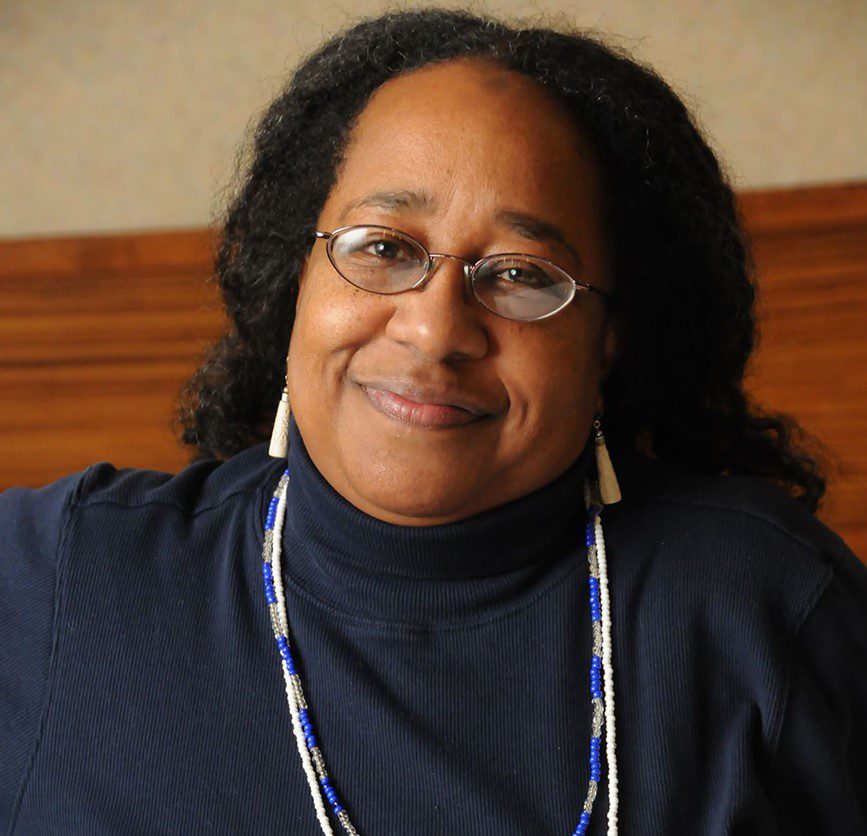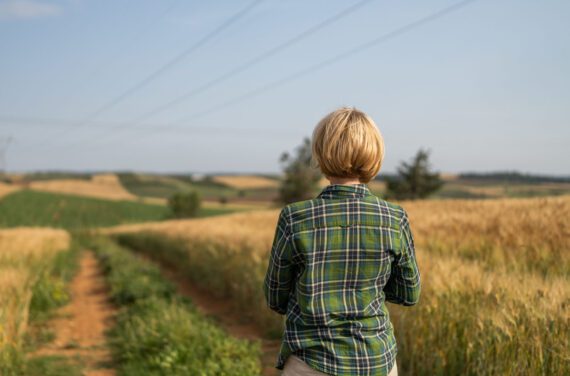By Todd Post
Omopé Carter-Daboiku, respectfully known as Mama O, is farm manager at the Edgemont Solar Garden (ESG), an “incubator” for beginning farmers in Dayton, Ohio. Here, urban residents are learning how to grow their own food.
The solar garden was established in 1978 on the site of a razed paper factory, across from a long-gone General Motors plant, in what is still a “food desert.” The solar garden with its greenhouse is an oasis in an area without stores that stock healthy foods such as fresh fruit and vegetables.
The United States has urban food deserts primarily because, beginning in the late 1970s, large numbers of manufacturing jobs disappeared from a swatch of the country that became known as the Rust Belt. Many Black farming families had moved to northern cities over the preceding decades, part of the Great Migration. Factory jobs offered a dependable paycheck. Grocery stores were among the casualties of the factory closures. Recovery was nearly impossible due to “redlining,” a racist practice in banking in which neighborhoods with many residents of color were literally circled in red on a map, and loans denied to applicants from those areas. Redlined areas could not attract new businesses and new jobs because credit was not available.
Fast-forward to 2020. The U.S. Department of Agriculture awarded grants to universities to strengthen their local food systems. The recipients included one of Ohio’s two historically Black universities, Central State University (CSU). The university formed a partnership with ESG to train beginning farmers, seeking to not only increase the supply of healthy foods in the community, but also to enable farmers to earn income.
Both of these are important steps toward rebuilding the health and economic viability of struggling “food deserts” and the people who live there. But programs with good intentions often go awry because the institutions that are able to manage grants, such as universities, don’t fully understand the realities of local communities. That’s where leaders like Mama O come in.
Mama O has lived in Dayton since 2012, when she moved from Cincinnati as the result of an epiphany she experienced, standing right at her kitchen sink. What she describes as a spirit-voice told her to move to Dayton, although it offered no guidance as to what to do there. As it turned out, Mama O became a champion of community farming and deeply committed to better health in her community.
Program staff at CSU wanted to use federal nutrition programs, such as the Supplemental Nutrition Assistance Program (SNAP), the WIC Farmers’ Market Nutrition Program, and the Senior Farmers’ Market Nutrition Program, to make fresh produce more affordable. But the original plan for a farmers’ market needed to change because, as Mama O put it, “Farmers’ markets are often perceived as pricey and elitist by folk in urban working-class Black communities who have been socialized to catch a sale at the grocery store.”
Another change was made as a result of farmers’ evaluations at the end of the growing season. CSU adapted the structure of the training program so that participants could farm cooperatively, a way of working they preferred. Mama O explained to CSU staff that the independent student model was “completely out of sync with the African-agricultural ethos.” In her book Farming While Black, Leah Penniman writes that Black farmers are grounded in cooperation and community, and “to farm while Black is an act of defiance against white supremacy and a means to honor the agricultural ingenuity of our ancestors.”
Mama O prioritizes teaching people in the community how to grow and preserve African American heritage crops, like collard greens and okra. Restoring community health means encouraging residents to grow their own produce and develop their own ability to set priorities and make decisions about their farms. Her upcoming plans include collaborations with Agraria Center for Regenerative Practice in neighboring Greene County and the new Five Rivers Health Center down the street. The center prescribes fresh food as medicine to reduce racial health disparities in diseases like hypertension and diabetes.
It was the true partnership between CSU grant staff and people in local communities that made the project effective. USDA’s support for institutions that genuinely empower local communities contributes to ending U.S. hunger.
Todd Post is senior domestic policy advisor with Bread for the World.



